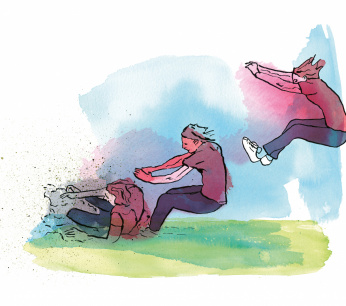Staff give a lot of physical lessons, a quarter feels unsafe
Despite the lockdown, many teachers still teach physically at school. For example to exam classes or vulnerable students. Teachers and support staff often feel unsafe in this regard. This is evident from a survey among nearly fifteen thousand AObmembers.

Image: Pixabay
In primary education, 30 percent of teachers appear to still attend school. Especially to teach vulnerable students, whether or not in combination with online lessons, or to provide emergency shelter for students of parents in a crucial profession.
This percentage is even higher in secondary education: around 55 percent of teachers still attend school here. To teach graduate students, to provide practical lessons or to teach vulnerable students. In both educational sectors, most support staff also come to school.
A third to more than half of the teachers still teach face-to-face. That's a big forgotten group
“Everyone in the Netherlands thinks that lessons are only taught online”, says AObchairman Eugenie Stolk. “But that is not the case: a third to more than half of the teachers still give physical lessons. That is a large forgotten group. ”
The survey shows that many staff members who come to school feel unsafe. In education as a whole, roughly half of the teachers feel 'somewhat safe' and a quarter downright 'unsafe'. These percentages are comparable for the support staff.
Insecurity
The feeling of insecurity will have increased further last weekend due to the broadcast of Nieuwsuur. In it, two members of the Outbreak Management Team (OMT), pediatrician Karóly Illy and infection prevention professor Andreas Voss, stated that the idea that high school students play a limited role in corona transmission was `` a mistake. '' The one and a half meter measure would have been unleashed too quickly in secondary schools.
Responsible
“Minister Slob has decided that final exam candidates and special needs students must be physically taught,” says AObchairman Stolk. “But in the meantime, if the OMT's advice is not unambiguous, people are increasingly concerned about their safety. Because how can you keep a distance of XNUMX meters from each other with thirty final exam candidates in one classroom? The minister must now really very quickly clarify what is and what is not responsible. "
Close
Due to the lack of clarity from the government, the AObmembers themselves in the dark about how education should continue in the short term. In secondary education, for example, a quarter of teachers think the current situation is the best. Roughly a quarter want to continue in the current situation, but in half classes. Another quarter wants to close the school completely, while about ten percent want to open the school completely again.
Schools must spread pupils across the building and across classrooms, so that there is sufficient distance
To be on the safe side, Stolk believes that lessons should no longer be given to large groups of students for the time being. "Schools must spread students across the building and across classrooms, so that there is sufficient distance. And if that is really not possible, the lessons should be given online - also to exam candidates."
Working Conditions Act
Teachers and support staff who feel unsafe, for example because they regularly have to deal with large groups of students, advises the AOb to submit an official report about this to their board. “This is formally called a 'notification of a dangerous situation', according to the Working Conditions Act. These letters can encourage employers to adopt a different policy - for example, to reduce or spread the groups of students. ”
Vaccination
After all, the survey shows that two-thirds of education staff definitely want to be vaccinated. Some don't know yet, and 5 percent thank you for it. There is a clear difference between age categories: the older, the higher the willingness to vaccinate.
Also read: AOb: 'Delete compulsory physical education for exam candidates'


